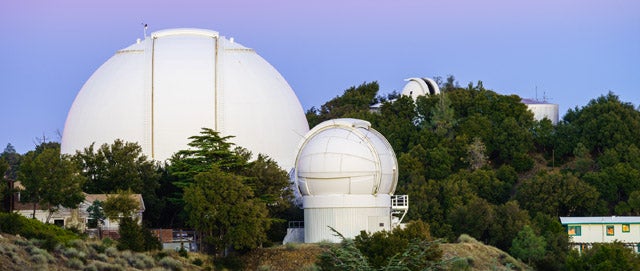
Exoplanets—planets orbiting stars that aren’t our Sun—seem to be popping out of the cosmic woodwork now that we know where and how to look for them. The Kepler mission
![]()

Exoplanets—planets orbiting stars that aren’t our Sun—seem to be popping out of the cosmic woodwork now that we know where and how to look for them. The Kepler mission
![]()

We love stories that take us to alien planets and let us explore whole new environments. But not every alien planet is totally realistic, especially given how much we’ve learned about exoplanets lately. So we asked six experts to tell us the biggest mistakes they see in fictional habitable worlds — and here’s what they told us.
![]()

Forget UFOs — there are a lot of objects and events in space that are identified, but still completely incomprehensible. From planets in our solar system, to inexplicable energy bursts from across the universe, here are some of the enduring mysteries of the space and time we call home.
![]()

Weighing a planet is a tough task. I mean, it’s not like you can just put them on a bathroom scale. And, while astronomers figured out how to measure the mass of planets in our solar system a long time ago, it’s practically impossible to weigh exoplanets. Well, it was until recently.
![]()
Kepler keeps finding more and more potentially habitable planets in our Universe
![]()

The odds of finding a habitable planet elsewhere in the universe just get better and better. A new study claims that one in five Sun-like stars has an Earth-size planet in the habitable zone. That adds up to about 20 billion Earth-size planets in the Milky Way alone.
![]()

A team of astrophysicists have made an exciting however complex discovery a mere 170 light years away. In their own words, it’s "the first evidence of a water-rich rocky planetary body" outside of our own solar system to have evidence of water. It’s the "rocky" bit that makes it Earth-like.
![]()
The International Astronomical Union is sitting down with the Internet to have a little talk. Just because some kids on the playground say they’ll let you name an exoplanet for $5 doesn’t mean you should give them $5. First of all they’re not the boss of you, and second of all they have nothing to do with planet-naming. More »
The Kepler telescope that launched in 2009 is is no slouch when it comes to hunting for exoplanets. The system is charged with investigating the more than 145,000 stars within its view in the hopes of finding habitable planets but those stars constitute just 0.28 percent of the sky. Luckily, there’s a new orbital telescope from MIT that will survey the rest. More »
NASA’s Kepler space telescope hasn’t exactly been a slouch when it comes to planet hunting, but that effort will soon be getting a considerable boost courtesy of a new mission selected by NASA as part of its Explorer program. Dubbed the Transiting Exoplanet Survey Satellite (or TESS), this new space telescope will one-up Kepler with the ability to perform an all-sky survey (an area 400 times larger than previous missions) to search for transiting exoplanets, with an eye towards planets comparable to Earth in size. TESS was developed by an MIT-led team, and will be placed in what they describe as a new “Goldilocks” orbit, allowing it to travel close enough to the Earth every two weeks for a high-speed data downlink while still remaining safely beyond the harmful radiation belts. It’s now set for launch in 2017, when it will be joined by the Neutron Star Interior Composition Explorer (NICER), an addition to the International Space Station also selected as part of the Explorer program last week that will use a process called X-ray timing to study neutron stars.
Via: New Scientist